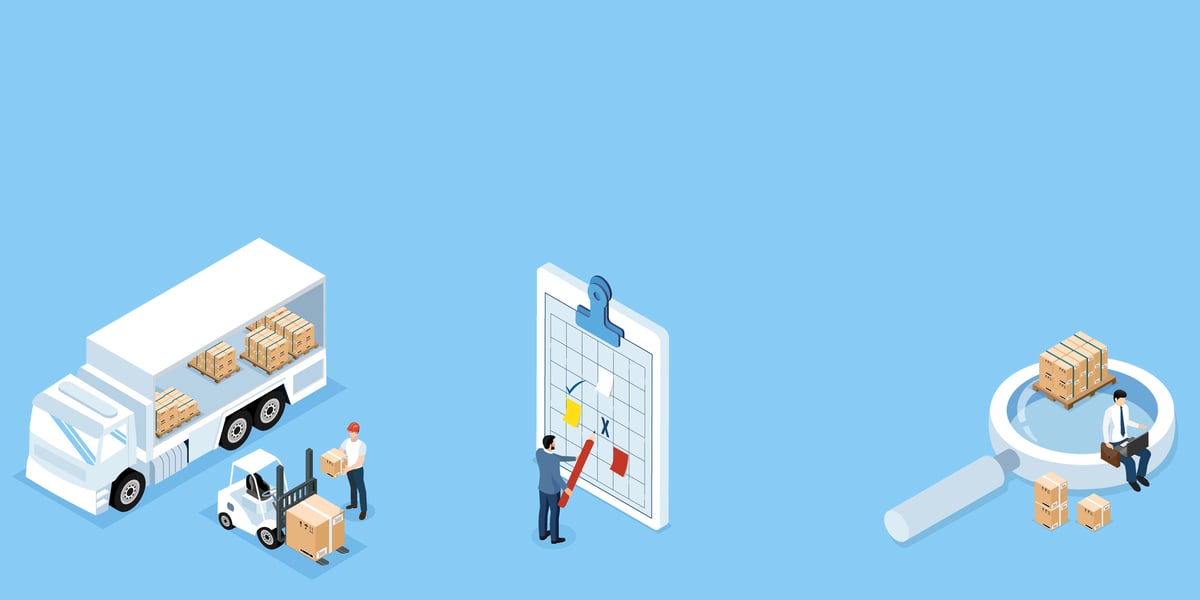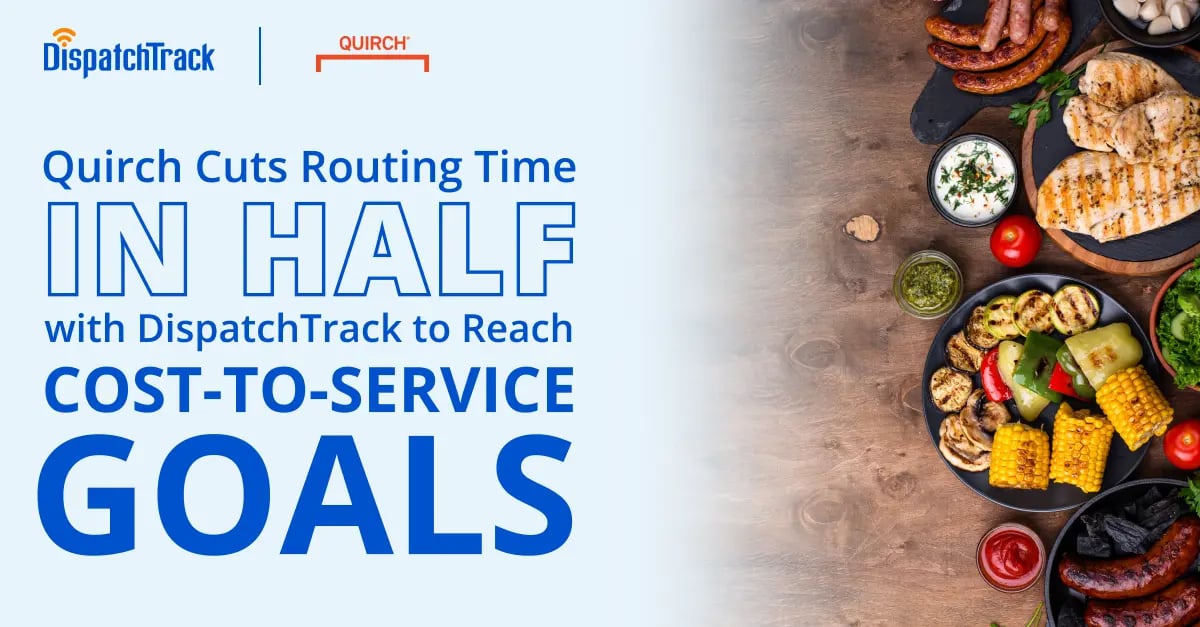Note: This article was originally published in 2022, and has been updated to include new information and insights.
Do you ever look at your delivery schedule and wonder why you’re delivering a single keg of beer every Wednesday to an account that receives large orders every Tuesday and Thursday? Or why you never seem to have enough capacity to handle the holiday rush on Memorial Day? Or how much it actually costs to organize your deliveries the way they’re currently organized?

In a moment where the economy seems particularly volatile, and costs are rising faster than businesses can keep up, it’s important to be asking exactly those sorts of questions. In fact, it’s important not just to ask them, but to find a way to answer them with an eye towards making sure you’re delivering to customers in a way that’s cost-effective and positions you for future success.
Needless to say, it’s almost impossible to do that when it feels like your back is constantly against the wall and your time is taken up reacting to changes and disruptions. Unfortunately, that’s been the status quo at a lot of delivery organizations over the years, with planners being more reactive than proactive.
Changing the way you do things is always a challenge, but the current conditions in the market aren’t really giving most businesses another option. That’s why it’s never been more important for delivery organizations to find a way to be proactive instead of reactive. How do you make that happen? Start with a focus on strategic planning.
What Challenges Are on the Horizon for Delivery Organizations in 2024?
We don’t need to spend too much time belaboring the point about market conditions going into 2024. Labor shortages aren’t going away any time soon—virtually everything that goes into a successful delivery seems like it’s becoming more expensive.
Being asked to do more with less won’t be a new experience for most people who manage deliveries on any level. But this upcoming year may be particularly acute on that front, meaning that it’s more important than ever to find a way to create delivery and distribution plans that are flexible and resilient in the face of changing conditions.
Businesses that deliver mostly to consumers may have to deal with downturns in demand, though it seems likely the trickier issues will come from rising costs. B2B organizations, e.g. those in food and beverage distribution, may find themselves grappling with order mixes that change faster than ever, and they’ll have to find a way to keep customers happy without raising prices.
At the same time that these challenges are arising, of course, the importance of delivery is becoming more and more obvious—even beyond the roles that traditionally interact with it. Your average CEO is more likely than ever to be actively interested in what’s happening across the company’s warehouses and distribution centers than ever. This level of scrutiny comes at a moment when customer experience and cost-efficiency have the potential to be at odds with one another—making it the perfect time to take a step back, accumulate some high-level buy-in, and start taking a proactive approach to planning out your delivery and distribution network.

How to Turn Smarter Strategic Planning into Better Deliveries
By transitioning from simply reacting to changing circumstances with the best possible fixes in the moment, to proactively plotting out the optimal way to meet customer delivery demand, you can position yourself to weather whatever storms 2024 throws at you.
In practice, this will mean different things for different businesses. But broadly speaking, this might involve a few elements:
- Predicting future demand: This is rarely an exact science, but if you have a lot of data on past demand to work with, you can at least get a general sense of where you’re likely to be delivering to in the future.
- Accurately measuring your capacity: Often, when planners feel like they should be able to complete all their deliveries with their existing capacity, they’re right. It’s just a matter of cutting out inefficiencies and ensuring that you’re dispatching the optimal routes to drivers. Before this level of optimization takes place, it’s difficult to know what your true capacity level is, which makes strategically increasing fleet size a challenge.
- Optimizing warehouse placement: If you have a sense of where you’ve delivered in the past and an idea of where your ongoing business initiatives might push you to deliver in the near future, you analyze your existing network to see if it’s actually offering you the most efficient possible placement of warehouses, distribution centers, etc. It’s possible that by moving particular elements in your network, you can actually reduce drive times to customers and thereby increase efficiency.
- Creating multiple distribution plans: Sure, most weeks things are going to look pretty similar—in most B2B distribution contexts, it’ll be more or less the same deliveries on the same days; B2C delivery organizations will be delivering to new customers, but often in similar volumes and product mixes. For Thanksgiving or Black Friday, the status quo goes out the window, which is why businesses need to have multiple plans prepared in advance that can be swapped in at a moment’s notice, e.g. for holidays or special promotions.
Again, these are going to vary based on your industry, your size, and the particulars of your business. But it’s hard to overstate the importance of taking a more strategic approach to fulfillment. When you have the right transportation network, the right assets, and the right plan, you can decrease the waste and inefficiency that are often baked into long standing logistics processes. Not only that, but you can make your operations agile enough to handle changing conditions—from an unexpected demand spike to a huge supply chain disruption—quickly and effectively.
What Does Your Delivery Technology Need to Offer to Make All This Possible?
It would be perfectly understandable if you looked at some of the tactics above and thought that they seemed like luxuries. Not only does the kind of planning we’re talking about traditionally take a lot of time and resources—which businesses may not have to devote to this kind of planning—they can be imprecise and uncertain.
But these elements of strategic planning can be efficient, everyday activities with the right technology.
What does that look like in practice? It looks like leveraging delivery management software that offers the following:
- Speed and processing power: One of the reasons that strategic planning is so difficult is that creating delivery and distribution plans, especially in areas like beverage distribution, can take forever. When your software enables you to create complex route plans in minutes, this limitation vanishes.
- AI and ML: Being proactive instead of reactive naturally requires the ability to predict what’s coming down the pike—at least to a certain extent. That’s exactly where predictive technologies like AI and machine learning come in. When you can predict the impacts on costs, delivery time, carbon efficiency, and more of proposed changes to delivery plans, you can make smart, data-driven decisions.
- Scalable SaaS technology: There’s no way to future proof your supply chain—but you can future proof your technology. Technology that’s flexible, scalable, and highly-connected puts you in a position to grow and adapt without grappling with complex change management issues every time you need to enable a new feature or route an extra dozen trucks.
When you have technology that meets these criteria, you suddenly have the ability to take a proactive approach to planning deliveries. With all the knowns and unknowns that are headed towards the global supply in 2024, there’s no time like the present for making sure you’re prepared.